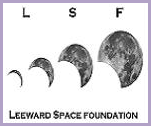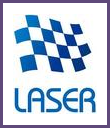 First up is Dr. Pugno of the Laboratory of Bio-inspired Nanomechanics at the polytechnic Institute of Torino, Italy. Dr. Pugno originally came tot he notice of the Space Elevator community when he began to discuss defects and other potential problems with making a tether suitable for a Space Elevator. I remember Brad Edwards being somewhat dismissive of Dr. Pugno’s work, but I think time has proven him correct. Dr. Pugno has been turning his attention to making these cables as strong as possible and today’s talk was on the same theme. He drew parallels to the organic world; if bones, for instance, can heal themselves, why can’t CNTs? If some sort of self-healing capability could be introduced into a cable, then it could become more robust. This was a very interesting presentation and I think there is a real future in this work. The SE community had always postulated repairing the tether, but from macro-size breaks (introduced by space debris, etc.). Dr. Pugno brings this down to the atomic level and his idea may turn out to be vital. He still believes that the maximum strength possible for a cable is 38 GPa…
First up is Dr. Pugno of the Laboratory of Bio-inspired Nanomechanics at the polytechnic Institute of Torino, Italy. Dr. Pugno originally came tot he notice of the Space Elevator community when he began to discuss defects and other potential problems with making a tether suitable for a Space Elevator. I remember Brad Edwards being somewhat dismissive of Dr. Pugno’s work, but I think time has proven him correct. Dr. Pugno has been turning his attention to making these cables as strong as possible and today’s talk was on the same theme. He drew parallels to the organic world; if bones, for instance, can heal themselves, why can’t CNTs? If some sort of self-healing capability could be introduced into a cable, then it could become more robust. This was a very interesting presentation and I think there is a real future in this work. The SE community had always postulated repairing the tether, but from macro-size breaks (introduced by space debris, etc.). Dr. Pugno brings this down to the atomic level and his idea may turn out to be vital. He still believes that the maximum strength possible for a cable is 38 GPa…
Next up is Sourabh Kaushal and Nishant Arora from India, presenting via Skype. Sourabh and Nishant prepared a paper, entering the 2010 Pearson prize and also presented at the 2010 Space Elevator conference in Redmond, Washington. Their presentation was general in nature, discussing Space Elevator concepts. We had technical difficulties with Skype and so their presentation was abbreviated. I believe they were proposing using graphene as an alternative to CNTs, but I’ll have to review their presentation slides to be sure. All of us at the conference were very happy to have a presentation from India.
Break…
Professor Kai from Japan then presented his talk; “Who can establish the space elevator?”. Dr. Kai presented the case that only an international organization would be allowed by the world community to build & operate a space elevator. He uses Article VI of the Outer Space Treaty as his justification. This organization would initially be modeled on the existing treaty for the International Space Station, but must be open-ended so that any country can join it. Professor Kai presented his paper via Skype – no technical issues this time.
Professor Kai was followed by Shuichi Ohno, the president of the Japan Space Elevator Association (JSEA). Ohno-san talked about the 2010 JSETEC (Japan Space Elevator Technical & Engineering Competition) event hosted by JSEA, including summarizing the teams that competed and the results of the competition. Ohno-san included several very interesting pictures from the competition in his presentation. Next year, JSEA plans to double the height the climbers must ascend from 300 meters to 600 meters – it will be interesting to see what they use to hold the tether aloft. Ohno-san said that there will be teams from Japan competing in the upcoming EuSEC (European Space Elevator Competition). The JSEA-sponsored LASER competition was also discussed.
Next up was a presentation by Franciska Volgyi (from the Technical University of Munich – TUM) on EuSEC, Europe’s first Space Elevator Challenge. This is targeted towards student teams and the goals are to establish a European Space Elevator Community, to introduce the Space Elevator concept to he European public and to increase the understanding of the Space Elevator System. They have set up four categories of team entries, starting with remote-controlled, battery powered systems working their way up to autonomous, beamed-power systems.
The last presentation before lunch was by Mikhail Schwarzbart from the Institute of Mechanics and Mechatronics on the stability of the Space Elevator. This presentation had the most equations of any of them ? but I think the upshot of his presentation was that the modern day concept of a Space Elevator is long enough and has enough mass to be inherently a stable system. His model was a simple one, including only the earth and the tether – climbers were not included.
Lunch…

 John Lee and his
John Lee and his  I was recently contacted by Tris Lucas of galaxyswan, letting me know that they have created a new Space Elevator song (titled, creatively enough, “Space Elevator”) and posted it on the web.
I was recently contacted by Tris Lucas of galaxyswan, letting me know that they have created a new Space Elevator song (titled, creatively enough, “Space Elevator”) and posted it on the web. ISEC’s
ISEC’s On November 21st, the Japan Space Elevator Association (JSEA) held another of their LASER (Lego bricks Activity and Space Elevator Race) competitions. Mr. Hideyuki Natsume, a Director at JSEA, informs me that 36 teams with more than 100 people participated and that the competition theme was “payload-juice can”.
On November 21st, the Japan Space Elevator Association (JSEA) held another of their LASER (Lego bricks Activity and Space Elevator Race) competitions. Mr. Hideyuki Natsume, a Director at JSEA, informs me that 36 teams with more than 100 people participated and that the competition theme was “payload-juice can”. The LASER website is
The LASER website is  And, no sooner than we have wrapped up the Fourth EuroSpaceward conference than it’s time to remind people about the upcoming
And, no sooner than we have wrapped up the Fourth EuroSpaceward conference than it’s time to remind people about the upcoming  So, the 2010 EuroSpaceward conference is over – it sure went by quickly. It was a very enjoyable conference and Markus Klettner, the Executive Director of EuroSpaceward deserves a lot of credit for the work he did in organizing this event. Dr. Vessilin Shanov remarked to me at the end of the first day that this conference “keeps getting better each year” and I can only agree. Saturday’s presentations were all about CNTs and the state-of-the-art in their development while Sunday was focused specifically on Space Elevator topics. The synergy between the two sessions and their speakers was wonderful to see. Space Elevator people are obviously critically interested in the status of CNT development while the CNT theorists and developers were able to see what “the dreamers” (and I include myself in that group) want to do with the fruits of their efforts.
So, the 2010 EuroSpaceward conference is over – it sure went by quickly. It was a very enjoyable conference and Markus Klettner, the Executive Director of EuroSpaceward deserves a lot of credit for the work he did in organizing this event. Dr. Vessilin Shanov remarked to me at the end of the first day that this conference “keeps getting better each year” and I can only agree. Saturday’s presentations were all about CNTs and the state-of-the-art in their development while Sunday was focused specifically on Space Elevator topics. The synergy between the two sessions and their speakers was wonderful to see. Space Elevator people are obviously critically interested in the status of CNT development while the CNT theorists and developers were able to see what “the dreamers” (and I include myself in that group) want to do with the fruits of their efforts.



 And we’re off. Markus Klettner, Executive Director of EuroSpaceward, is giving the kickoff address. He is talking about why we are having this conference. His rationale is to help humanity become a
And we’re off. Markus Klettner, Executive Director of EuroSpaceward, is giving the kickoff address. He is talking about why we are having this conference. His rationale is to help humanity become a 
 One of the things which I should be able to accomplish at the upcoming
One of the things which I should be able to accomplish at the upcoming  The final set of abstracts for the presentations have been released and you can view them here (
The final set of abstracts for the presentations have been released and you can view them here (